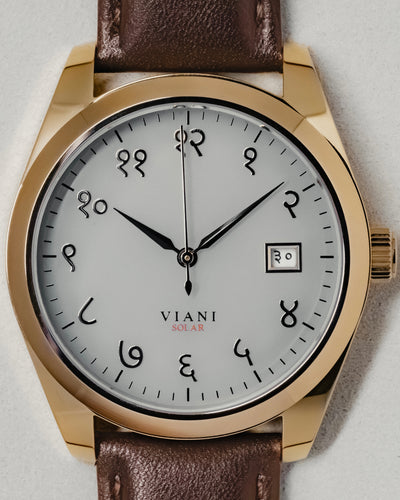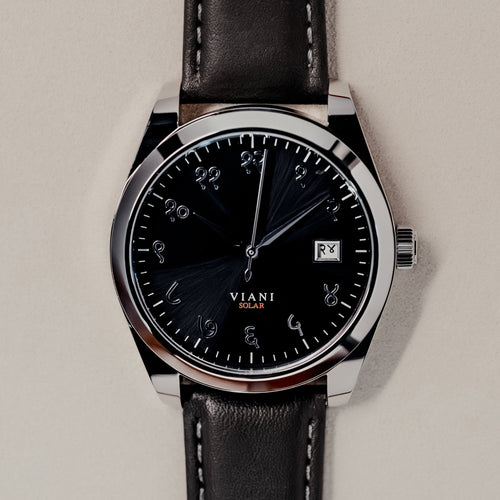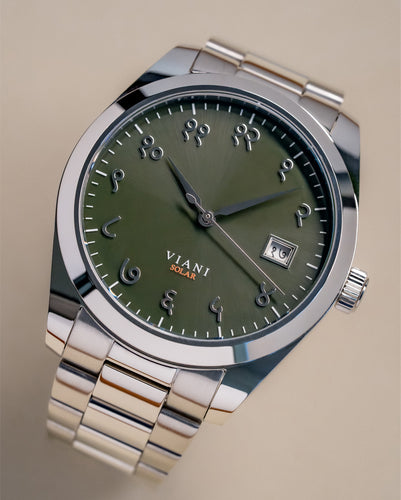

Hindi Numerals
VIANI is an Independent Watch Company inspired to preserve the history, etiology, and importance of numbers. Each VIANI© Time Piece is meticulously designed and embossed with the Hindu Numeral System - one of the oldest numerical systems still used to this day. VIANI prioritizes clean and sustainable energy and are powered solely by light. Learn more about the rich legacy of the Hindu-Arabic Numeral system below.

The Hindu-Arabic Numeral System (0, 1, 2, 3, etc.) is a fundamental part of modern civilization, deeply ingrained in our everyday lives. From engineering to space exploration, it has played an essential role in shaping the world we know today. But have you ever stopped to wonder where and how this numbering system came to be? The answer starts with the origin of ZERO and the Hindu Numeral System.
The origin of the Hindu Numeral System can be traced back 5000 years ago to what is now modern-day India and Pakistan. During this time, the numeral system utilized was used primarily for counting, as there was no standardized technique for subtracting, multiplying, or dividing complex numbers – until the invention of zero. The earliest known history of the number 0 was introduced in a Sanskrit poem in modern day India written by astronomer Brahmagupta in c.628. The poem “Brāhmasphuṭasiddhānta” (translated to "The opening of the Universe'') discussed the need for zero and its ability to aid in subtraction, addition, and multiplication.

From India, the concept of zero is believed to permeate throughout Asia and the Middle East - where it reached mathematician Mohammed Al-Kohwar. Al-Kohwar utilized the concept of zero and wrote a book entitled "Kitab Al-Jabr" in the year c.820 - this is where the earliest concepts of algebra were introduced and named after the man himself (Al-Jabr —> Algebra).
Eventually, Europeans adopted the Hindu-Arabic Numeral system - a combination of both the ideas from the Hindu Numeral and Arabic Numeral System. At the time, Roman Numeral was the most commonly used numeral system in Europe, but was severely limited in it's ability to perform complex calculations. You could imagine how difficult it may be to multiply XXXVI by III? The limitation of the Roman Numeral system was the absence of a dedicated symbol for the number zero (Ex: X = 10, C = 100). Zero has no value, however it is the most important number in mathematics as it provides a place holder for nothing. Because of this, the Hindu-Arabic numeral system was seen as a far more efficient system for performing advanced mathematics. Eventually, the Hindu-Arabic numeral system was adopted and utilized throughout the world.
VIANI © celebrates and stands to preserve the rich legacy of numbers, bringing a piece of history and culture to your wrist with each Time Piece, and reminds us of the limitless possibilities of humanity building on each-others knowledge and discoveries.








